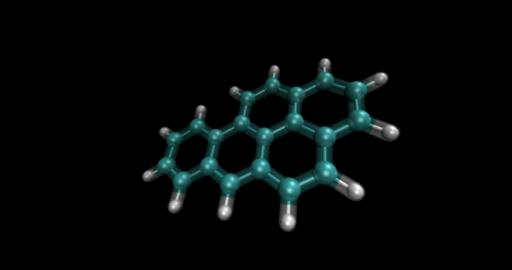
When tracking macros, it's easy to get lost in the details. For example, does protein turn into carbs? You're not alone if you’re confused about the relationship between protein and carbohydrates. Many are baffled by how protein, carbs, and fats impact each other when structuring a balanced diet. It can also be stressful to figure out how to balance these macronutrients to meet your unique health goals. In this article, we’ll clear up the confusion surrounding protein and carbs to help you confidently structure your diet and optimize your health. We will also touch upon "how to hit your macros?".
Cal AI’s calorie tracker is a valuable resource that can help you achieve your goals. This easy-to-use tool enables you to achieve your goals by illustrating how different foods impact your macro targets, so you can ditch the guesswork and personalize your diet for better blood sugar levels, energy, and overall health.

Protein plays an indirect yet critical role in blood sugar management. First, it’s crucial to understand that protein has a minimal direct impact on blood glucose levels. Nevertheless, this macronutrient can regulate blood sugar by stimulating insulin release and slowing carbohydrate digestion. One of the best ways to manage your blood sugar is to eat a balanced diet of all three macronutrients:
Still, we know carbohydrates tend to have the most significant impact on blood sugar. In contrast, fat and protein have a more minor effect.
Protein can help slow the absorption of glucose into the bloodstream. While the metabolism of macronutrients is similar, each impacts blood sugars differently. Protein is broken down into smaller building block units called amino acids, which your body then uses to build and repair tissues or convert into glucose in the liver.
Amino acids are used in gluconeogenesis, which produces glucose from non-carbohydrate sources. This process is critical during long fasts, like sleeping overnight or fasting without food.
In other words, amino acids have a minimal impact on blood glucose levels in healthy people. So, how important is protein in your diet? Even though protein doesn't directly impact blood sugar levels, it can stabilize them. When you eat carbohydrate-heavy meals or snacks, your blood sugar will rise as those carbs are broken down into glucose.
Pairing carbs with protein can help prevent sharp rises in blood sugar levels. Protein takes longer to digest than carbohydrates, slowing glucose absorption into the bloodstream. This leads to a more gradual rise in blood sugar levels, avoiding sudden spikes and crashes. Protein can also help you feel fuller for more extended periods. This is because it takes longer to digest and can keep you satiated between meals, reducing the temptation to snack on ultra-processed, carbohydrate-rich foods that can cause blood sugar spikes.
Now that you know why protein is essential in blood sugar balance, more is better. Well, not exactly. Depending on how old you are, whether you have pre-existing health conditions, and what type of protein you eat, eating higher amounts of protein than your body needs also has its downsides.
Eating a diet with more protein (about 23 to 32 percent of your total daily calories from protein) for up to a year can help lower your blood pressure and body weight than if you eat less protein. Nonetheless, if you've been diagnosed with kidney disease, eating more protein may overwork your kidneys and cause more harm than good.
At the same time, high-protein diets can have varied results depending on the type of protein you consume. A healthy and balanced diet can include plant-based and animal-based protein sources. Nevertheless, studies show that incorporating more plant- and less animal-based protein reduces the risk of type 2 diabetes and other health challenges. Choosing a diet with predominantly plant-based proteins, such as legumes and nuts, may reduce the risk of developing type 2 diabetes.
Conversely, diets high in animal protein, especially red and processed meats, may increase the risk of type 2 diabetes. These aren't the only factors that contribute to diabetes, and both animal—and plant-based proteins can be part of an overall healthy diet. So, what should we include in our diet to help balance our blood sugar and avoid the risk of type 2 diabetes?
Remember to focus on the quality and frequency of animal protein, not necessarily on omitting it entirely. Source grass-fed meats, free-range poultry, and wild-caught fish, and avoid highly processed meats. Some good choices to try include:
While these contain a good amount of protein, they also contain carbohydrates, so it is vital to watch portion size. Choosing high-fiber, low glycemic index plant-based foods is key to blood sugar stabilization. Finding ways to substitute plant protein for animal protein may help decrease the risk of type 2 diabetes while maintaining stable blood sugar. Some good choices to try:

Under normal circumstances, protein is not directly converted into glucose. Instead, the body can produce glucose from amino acids through gluconeogenesis. This process is demand-driven rather than a direct carbohydrate replacement.
The International Food Information Council Foundation reports that 50% of consumers are interested in including more protein, and 37% believe protein helps with weight loss. A study in the May/June 2013 issue of the Journal of Nutrition Education and Behavior found that 43% of women surveyed eat more protein to prevent weight gain, which was associated with weight loss. But just because people are doing something doesn’t make it healthy. I asked Dr. Michelle Hauser, a clinical fellow in medicine at Harvard Medical School and a certified chef and nutrition educator, if it’s a good idea to eat extra protein and cut back on carbs.
“If you’re eating more protein but you have a good mix of fresh fruits, vegetables and whole grains to make up the rest of it, that’s fine,” Dr. Hauser told me. One of the advantages of eating more protein-rich foods is that people who do it also tend to eliminate overly processed carbohydrates, such as:
Such foods are rapidly digested, turned into blood sugar, and are low in healthful nutrients. Eliminating all carbohydrates and focusing only on protein isn’t necessary. Such an eating strategy may have a short-term payoff in weight loss, but it may also come with some long-term risks.
Protein is a critical part of our diet. We need it to build and repair cells and make healthy muscles, organs, glands, and skin. Everyone needs a minimum amount each day. The Institute of Medicine recommends 0.8 grams of protein per kilogram of body weight.
For someone who weighs 150 pounds, that means 54 grams of protein per day. Another guideline is ensuring that at least 15% of your daily calories come from protein. How might more protein and fewer carbs in the diet affect weight loss or weight control? “Protein takes more energy for you to digest than refined carbohydrates, and also gives your body a feeling of satiety,” says Dr. Hauser. Low-carb diets have been shown to help some people lose weight.
Over the long term, too much protein and few carbohydrates may not be the healthiest plan. This kind of eating pattern has been linked to an increased risk of developing osteoporosis. That’s because digesting protein releases acids into the bloodstream. The body neutralizes these acids with calcium, which can be pulled from bone.
Eating too much protein also makes the kidneys work harder. In healthy people, this usually doesn’t pose a problem. But those with kidney disease or diabetes (which is associated with kidney disease) need to watch their daily protein intake so they don’t overload their kidneys.
Depriving yourself of carbohydrates can also affect the brain and muscles, which need glucose (the fuel from digesting carbs) to function efficiently. The fiber delivered by some carbohydrate-rich foods helps the bowels move. Remember that healthy sources of carbohydrates, such as fruits, vegetables, and whole grains, come with a host of:
Different protein sources have different amounts of usable protein. Some as little as 18%. That's right, 18%. And you're most likely consuming them and wondering why you can't get that last layer of fat off or why you have bloating, mood swings, or sugar highs and lows.
I'll explain. When you consume protein, it isn't broken down into "protein molecules". It goes further than that. It's broken down into amino acids, the building blocks of protein. Among the amino acids are essential and non-essential amino acids combined in hundreds of different ways to make various types of protein.
The essential amino acids are necessary because the body can't make them independently. But when the body has all of the essential amino acids in an exact combination, it can make any of the other non-essential amino acids it needs and so make any proteins it needs for:
When you consume protein, it's broken down into essential and non-essential amino acids. Nevertheless, many crucial amino acids in the right combination are turned into new proteins and used by the body. But, when there are extras of certain essential and non-essential amino acids (and there always are), your body has to do something with them.
Many think the body holds onto amino acids, waiting for more EAAs until it has enough protein. But it doesn't. It can't. Your body only has one way to store amino acids: It turns them into fats. So, when faced with unused amino acids, there are two choices:
Look, if you’re counting your macros, making sure you're getting an exact number of carbs, fats, and protein because you know you need to hit specific numbers for your strength gains or fat loss goals, then you can't have sneaky "protein" turning into carbs or fats!
You won't get the results you expect. You'll get blood sugar spikes that shouldn't exist and fat that won't come off (because you're constantly feeding it). But what about the toxins? When burned as carbohydrates, something else happens to those unutilized amino acids, and it can reach toxic levels.
They're turned into nitrogen waste. This must then be eliminated through your kidneys and can be very hard on your kidneys. You can notice an ammonia-like smell in your sweat or urine when taking too much dietary protein. That's because your kidneys are overloaded with nitrogen waste, and your body must detox through your sweat glands. And it's all because you have these hidden "carbs" in your diet.
So how does this stack up against what you're taking? Protein Utilization Rates: We'll start at the bottom with what many people think is at the top: BCAAs. If you need all the essential amino acids to create protein, and BCAAs are only 3 of the EAAs, how much protein can you make? What percentage is turning into sugar and giving you that BCAA energy boost? That's right. I won't say you could eat a banana just as well because that would be mean. Moving on to WHEY and SOY: These are utilized at 16-18%, leaving 82-84% burned as sugar or stored as fat.
MEATS are utilized at 32%, and eggs are used at 48%. But they must be whole eggs as the EAA levels are not equal in the whites and the yolk but only hit 48% when combined. What's higher than that? Unsurprisingly, it's breast milk at 49%. This makes sense, considering an infant needs the most usable protein at that age.
Reducing carbs and eating more protein is okay, but ensure you also get some carbs in your daily diet. “If you take any healthy diet, 40% to 60% of calories should come from unprocessed carbs,” says Dr. Hauser. For someone on a 2,000 calorie-a-day diet, 40% would be 800 calories or 200 grams of carbs. (Note to self: Increase servings of carbohydrates.)
But there are good carbs, bad carbs, good proteins, and harmful proteins. Foods that deliver whole, unrefined carbs, like whole wheat, oats, quinoa, and the like, trump those made up of highly processed wheat or other grains. Lean meats, poultry, seafood, and plant protein sources like beans and nuts are far more healthful than fatty meats and processed meats like sausage or deli meats.
The good-bad thing can be confusing, so Dr. Hauser suggests a few simple principles. Pick the healthful trio. Each meal includes foods that contain fat, fiber, and protein. The fiber makes you feel full right away, the protein helps you stay full for longer, and the fat works with the hormones in your body to tell you to stop eating.
Adding nuts to your diet is a good way to maintain weight because they contain all three. Avoid highly processed foods. The closer a food is to how it started, the longer it will take to digest, the gentler its effect on blood sugar, and the more nutrients it will contain.
Choose the most healthful sources of protein. Protein-rich foods include:
These three strategies align with Mediterranean and Dietary Approaches to Stop Hypertension (DASH) diets. The DASH diet includes two or fewer servings of protein daily, mainly poultry or fish. “The Mediterranean diet uses protein from fish as a centerpiece of a meal, and other meats as more of a component of a meal,” says Dr. Hauser. I had to ask if it’s essential to spread carbs throughout the day or if it’s okay to limit them to one meal, the way I do. “If it makes you feel better to eat carbs at one meal a day versus spreading them throughout the day, that’s fine. You can scatter the carbs as you see fit,” says Dr. Hauser.

What’s considered good-quality protein? This can sometimes be confusing, but source and quality are crucial if you increase your protein intake, especially with animal protein! As mentioned above, sources of high-quality protein in your diet should include:
Balancing meals with protein, healthy fats, and the right amount and type of carbohydrates is essential for managing blood glucose.
What does that look like on your plate? It will depend on your overall nutrition needs. Still, one ounce of protein is around seven grams of protein. How much protein you need at each meal will influence your overall portion size. For example, suppose you’re aiming for 20-30 grams of protein at breakfast.
In that case, this may look like: This example includes quality protein, non-starchy vegetables, fiber, healthy fats, and whole grains to provide a balanced meal and blood sugar stabilization.
Consuming protein throughout the day is a good idea for many reasons. It promotes stable blood sugars, energy levels, and a feeling of fullness and may limit overeating later in the day. Adequate protein at meals, especially breakfast, can lower post-meal blood sugar levels.
One study found that a high-protein breakfast led to beneficial changes in the appetitive, hormonal, and neural signals that regulate food intake.
The order or sequence in which you eat a meal may impact your blood glucose levels. More specifically, eating protein and/or fat before carbohydrates may reduce post-meal glucose levels and promote the release of glucagon-like peptide-1 (GLP-1). GLP-1 has also been shown to help suppress appetite and promote satiety.
So the next time you approach a mixed macronutrient meal, try eating your protein and/or healthy fats before your carbohydrates. This may limit glucose swings and help stabilize your blood sugars.
Cal AI transforms calorie tracking with cutting-edge AI technology. Just snap a photo of your meal, and we'll do the rest.
Our app combines your phone's depth sensor with advanced AI models to:
With 90% accuracy on visible foods and multiple tracking options like:
We've made nutrition tracking effortless. Whether you're scanning a full meal or a quick snack, Cal AI
Our AI learns from your feedback to improve accuracy. It includes personalized insights and smart reminders to keep you on track. Cal AI makes achieving your fitness goals simpler than ever.
Track your calories with your camera using Cal AI's calorie tracker today!